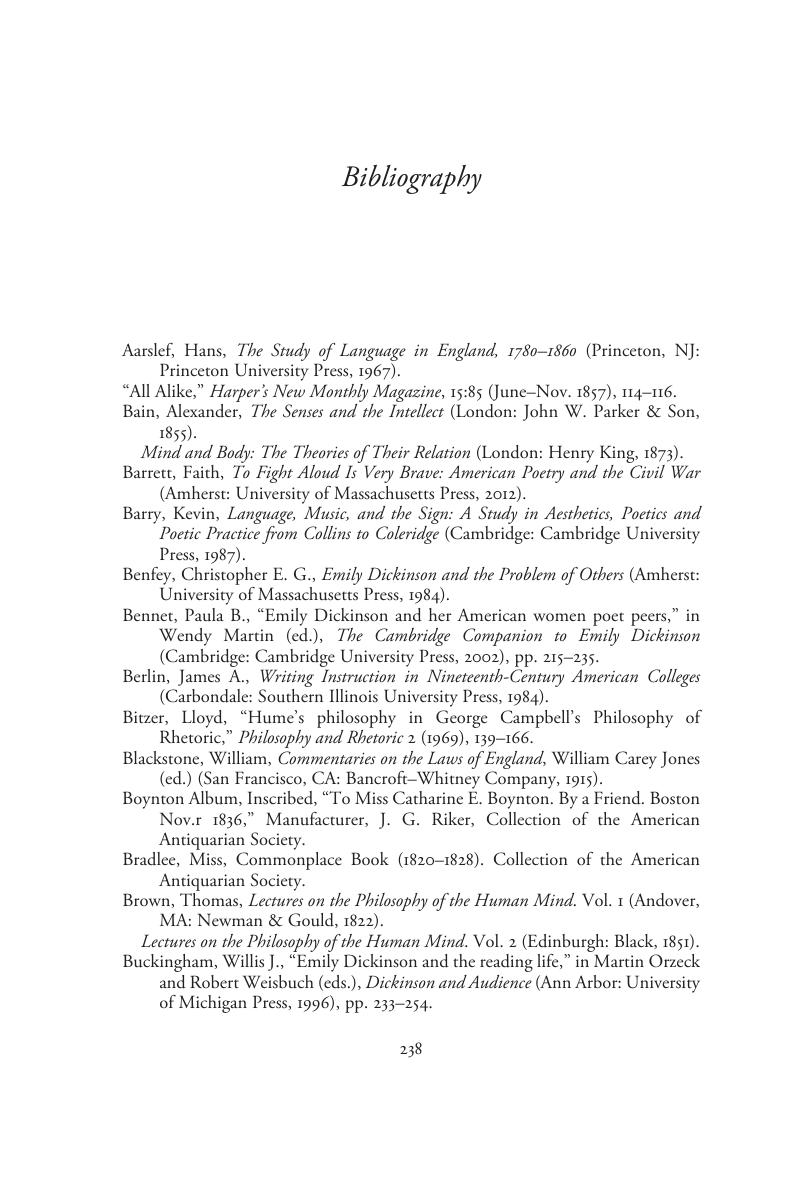Book contents
- Emily Dickinson: Poetics in Context
- Emily Dickinson: Poetics in Context
- Copyright page
- Dedication
- Contents
- Illustrations
- Acknowledgments
- Introduction
- Chapter 1 The Manuscript Variants
- Chapter 2 Dwelling in the Sign
- Chapter 3 Lightning in the Mind
- Chapter 4 “Elate Philosopher”
- Chapter 5 The “Relict of a Friend” and Associative Inscription
- Bibliography
- Index of Poems, Prose Fragments, and Letters
- Index
- References
- Emily Dickinson: Poetics in Context
- Emily Dickinson: Poetics in Context
- Copyright page
- Dedication
- Contents
- Illustrations
- Acknowledgments
- Introduction
- Chapter 1 The Manuscript Variants
- Chapter 2 Dwelling in the Sign
- Chapter 3 Lightning in the Mind
- Chapter 4 “Elate Philosopher”
- Chapter 5 The “Relict of a Friend” and Associative Inscription
- Bibliography
- Index of Poems, Prose Fragments, and Letters
- Index
- References
Summary

- Type
- Chapter
- Information
- Emily Dickinson: Poetics in Context , pp. 238 - 247Publisher: Cambridge University PressPrint publication year: 2020



